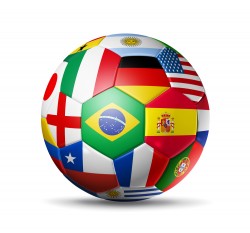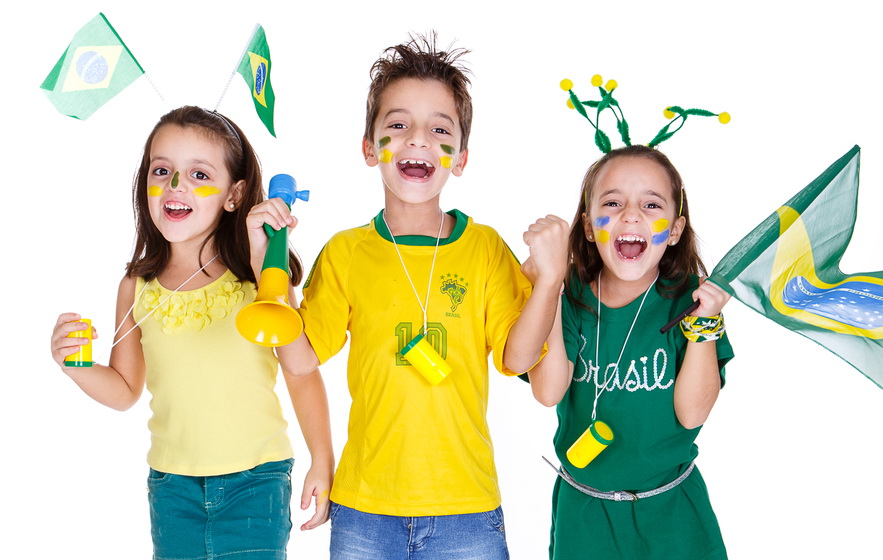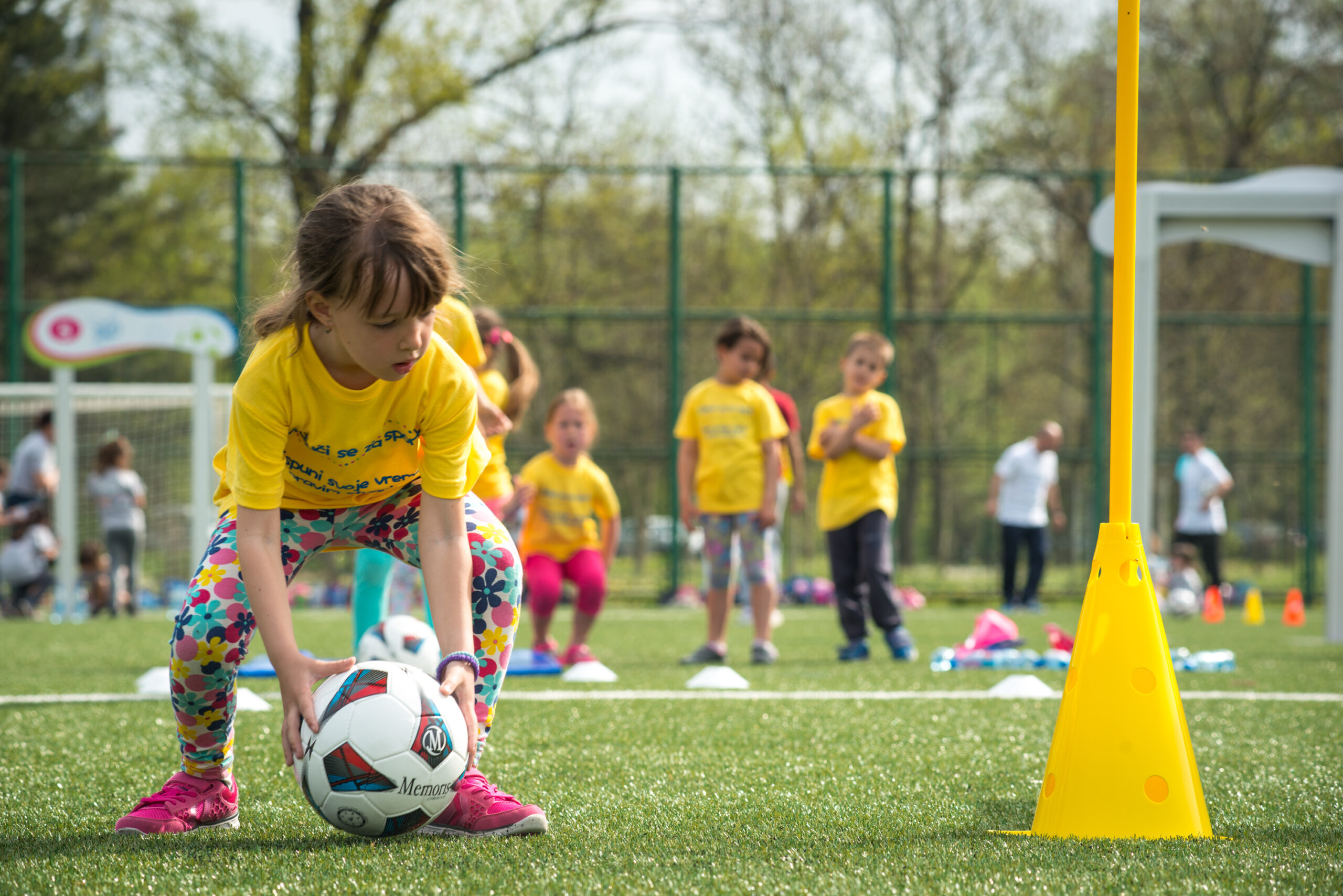The FIFA Youth Programme selects over 3,000 children to assist with important aspects of the tournament.
In a new ESPN commercial, U.S. national team midfielder Michael Bradley holds the hand of a young boy while he walks around an office. As Bradley makes copies and sorts mail, the boy is reminded of how “lucky” he is to spend the day with a soccer superstar even through the day’s mundane tasks.
The millions of viewers who have been tuning in to ESPN’s coverage of the 2014 World Cup will understand the tongue-in-cheek reference. Before each match, children march in hand-in-hand alongside the starting players of the national teams. Cameras provide close-up shots of the young boys and girls belting out their country’s anthems as they share the sport’s grandest stage.
For many Americans, the role of children at the World Cup is a mere curiosity. However, what began as a fledgling program at the 1998 competition is now a robust initiative that inspires thousands of kids. [tweet_quote]The FIFA Youth Programme selects over 3,000 children to assist with important aspects of the tournament.[/tweet_quote] In addition to serving as player escorts, boys and girls aged 6 to 17 volunteer as flag bearers, ball crew members, and FIFA Fair Play representatives. At least 60 children serve as part of the stadium crew for each game. Every four years, FIFA partners with major corporate sponsors such as McDonald’s, Coca-Cola, Adidas, and Sony to provide a once-in-a-lifetime experience for the participants. Most of the children are selected at random through online contests and drawings. The children have often forgotten that they entered their names into the pools only to receive a call from one of the sponsors informing them that they had won a trip to Brazil. The kids travel with a parent or chaperone and receive complimentary housing for the duration of their stay. After they fulfill their game-day duties, the kids play in local tournaments and meet fellow fans from around the world.
Worldwide Inspiration
The FIFA Programme is part of a growing movement to inspire the next generation of athletes. In a time when top soccer clubs in Europe are breaking Financial Fair Play regulations and sports are increasingly commercialized, it is refreshing to see the rejuvenation of grassroots programs. McDonald’s and Coca-Cola donate funds and resources to the home communities of Programme participants. Dedication to grassroots development is now crucial in the bid process to host major tournaments. As part of the bid to stage the 2012 London Olympic Games, chairman Lord Sebastian Coe promised that the Games would “Inspire a generation.” He pledged that, “every one of those individual performances will create a symphony of inspiration that will create lasting change.”
 The long-term economic benefit of major international sporting events is often debated but the FIFA Youth Programme has clearly touched the lives of many children. Brazilian ball crew member Cindy Valim de Souza was thrilled to meet her hero Lionel Messi before Argentina’s opening match against Bosnia-Herzegovina. In a sport where men receive so much attention, she appreciated the focus on female athletes and investment in the women’s game. 16 year-old Iago Fabricio Diaz is eager to serve as a FIFA Flag Bearer for the upcoming World Cup final at the hallowed ground of the Maracana stadium. Clint Dempsey, the U.S. team captain, could see such excitement in the children’s eyes. During his first week in Brazil, he tweeted a picture of his player escort to remind fans of the pure joy of the game.
The long-term economic benefit of major international sporting events is often debated but the FIFA Youth Programme has clearly touched the lives of many children. Brazilian ball crew member Cindy Valim de Souza was thrilled to meet her hero Lionel Messi before Argentina’s opening match against Bosnia-Herzegovina. In a sport where men receive so much attention, she appreciated the focus on female athletes and investment in the women’s game. 16 year-old Iago Fabricio Diaz is eager to serve as a FIFA Flag Bearer for the upcoming World Cup final at the hallowed ground of the Maracana stadium. Clint Dempsey, the U.S. team captain, could see such excitement in the children’s eyes. During his first week in Brazil, he tweeted a picture of his player escort to remind fans of the pure joy of the game.
FIFA has been harshly criticized in recent months. Controversy surrounding the awarding of the 2022 World Cup to Qatar and Sepp Blatter’s tenure as president marred the build-up to the Brazil tournament. The FIFA Youth Programme is therefore crucial to the organization’s global image. However, FIFA governors should not consider the initiative as a PR stunt but rather a springboard for long-term investment in the next generation. Participants must have opportunities to stay connected to the game and develop leadership skills after the final whistle blows. The kids who line up on the pitch may be soccer’s next superstars, yet it is more likely that they will be coaches and mentors who serve in their local neighborhoods around the world. These beaming children may only have a few moments in the limelight but they embody the sport and its future.

















